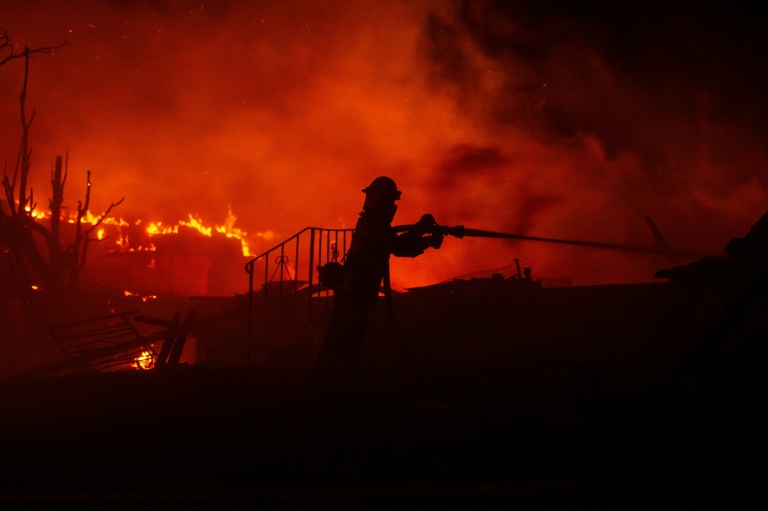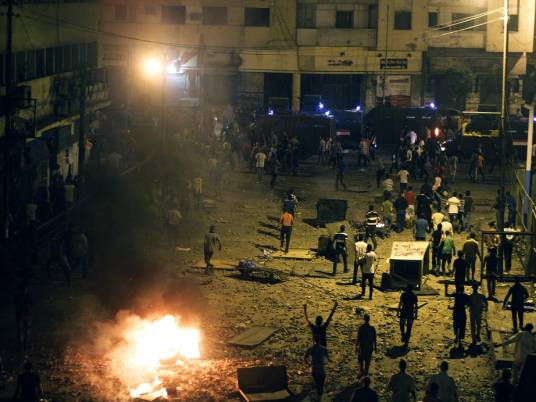For months, rumors of major real-estate acquisitions in Cairo’s downtown district have been rife, raising fears that the city center — long renowned for its hustle, bustle and local color — stood on the verge of gentrification. Al-Masry Al-Youm English Edition spoke to Karim el-Shafei, CEO of the Al-Ismaelia Real Estate Investment Company, which has already acquired several downtown properties, about the facts behind the hearsay
Can you give me some background about how the whole Downtown acquisition idea started?
The idea was mainly that of Alaa el-Sabaa, a co-founder of both Beltone Asset Management and EFG-Hermes, who has been preaching about saving downtown for quite a while. And since the government owns the majority of the property downtown, most of his efforts were going into convincing government officials to save these buildings from deterioration, while simultaneously maximizing the profit they are making out of them.
Meanwhile, because of the Al-Nitaq Art Festival which took place in downtown Cairo in 2001, I had fallen in love with downtown, and I wanted to acquire a building there with some friends of mine. We started checking out possibilities, and the brokers came back to us with more than 50 buildings available for sale, which made us think on a bigger scale. We started thinking that this process of revamping downtown doesn’t have to happen organically, but could be induced by private investment instead.
So when Alaa and I met through a common friend, we started talking about our favorite buildings in downtown, sharing stories and ideas, and we hit it off in 30 minutes. And unlike
other new business initiatives, we didn’t put together a business plan. Instead, Alaa made a few calls and managed to get a number of investors on board, and we got 315 million EGP to start with.
How long ago was that?
We concluded the verbal deal in 2007, and we sealed the first contract in February 2008, and this is when the company “Al Ismaileya for Real Estate Investment” was legally founded.
And what was the target of the business?
The idea was to acquire buildings, re-furbish them, and then rent the space.
So you are not planning to resell the buildings?
No, because we want to guarantee the proper management of the buildings. The business is not only about making money out of rent, and not even about renovating buildings only, but about reviving downtown as a dwelling for many segments of society. Downtown is not supposed to be high-end, but should have what it takes to make it appealing to all kinds of people, from budget shoppers to gourmet diners. It should have a variety of restaurants, hotels, coffeehouses, bars, cinema theaters, etc. The problem is that Downtown has degenerated s a neighborhood.
What do you mean?
In the last few decades, most of the upper and middle classes abandoned downtown. In addition, the neighborhood has become notorious for sexual harassment, traffic jams, etc. In a nutshell, downtown has become full of expelling forces to many segments of society.
And what are your strategies for creating this revival?
First, by introducing entertainment venues, bars and restaurants that suit different classes. Second, we are trying to support the art scene (which is luckily still centered around downtown), but also because the art scene is very exclusive, we are trying to support and revive more attractive art forms such as theater, poetry and standup comedy. We are now working with many art and culture spaces and curators to discuss how we can cooperate.
Why do you think there are so many buildings offered for sale?
Most of these buildings were built somewhere between 1910 and 1920, and the families multiplied over the decades, which has led to fragmented ownership. I remember that in one of the buildings we acquired, we had to negotiate with 92 owners. So many of these owners actually can not make any use of their units because there are so many people involved, so the only way out for them is to sell. Adding to this, the rent control according to the old laws has prevented rent from increasing, so it was just not lucrative for them anymore. As a matter of fact, after we make the acquisition of some buildings, many of the unit owners come to us voluntarily and offer to leave in return for compensation.
What is the process you go through after you acquire any building?
Once we acquire, we start studying the building architecturally, also in order to understand all the problems related to water and electricity, etc.. The idea is not to restore them cosmetically, but to address issues of modern life that have forced themselves on these buildings without any planning, such as air conditions or satellites. These buildings are in very bad condition, as neither the tenants who pay very little money, nor the owners who make peanuts out of renting them, is interested in paying for the maintenance. This is in addition to many destructive behaviors among residents, which has also made many of these buildings vulnerable to catching a fire at any point of time. You have no idea how much these buildings have been damaged.
Once these studies are complete, we start thinking of opportunities of how to use every building in the most optimal way. We always make sure to restore the buildings to keep them as they were originally intended, and not to change them. This is not a charitable act, but an integral part of the business model. We do believe that these buildings have a higher value because of their unique design, and we have no intention to change it.
And what stage are you at now?
So far, we are still in the acquisition phase, and we have acquired 16 buildings until today and are in the process of finalizing 6 more. We are now seeking to increase the capital with about 400 to 500 million Egyptian pounds to continue acquisition, because our target is to acquire 1 million square meters of built-up area, which is almost 15 to 20 % of downtown. This is – of course – a very optimistic target, but so far we have managed to acquire 100,000 square meters. But there are always a lot of obstacles, and also opportunities, which come up, we can never tell how the future will look like exactly. In a sense, you can say that we are optimistic about the success of the project, but what keeps changing is the form of that success and the degree it will resemble what we had in mind originally.
We have this confidence because our studies show that this is how it worked everywhere else in the world. The central areas of many major cities have been revived, whether organically, through private investments or government intervention or a mixture of these. There were extreme models where the revival was done without a soul, like the case of Beirut, and others like Manhattan where it was more organic.
Do you think that focusing on high end facilities and businesses will drive the lower and middle classes away from Downtown?
No, I don’t think so. Egypt has a history of coexistence among different social classes. For example, if you take a turn at some point from Michel Bakhoum Street in Mohandeseen, you will find Ezbet Radwan, and there are many more examples. Also, it is our plan to create destinations for many social classes and market segments, not only the higher class.
Are you focusing on any particular areas or streets in downtown?
Yes, we want to stay in the heart of downtown from the Opera square till Talaat Harb Square, including main streets like Adly, Sherif, Abdel Khalek Tharwat and Talaat Harb. We prefer to have these buildings close and centered rather than scattered all over the downtown area.
Why do you think there have been so many rumors and stories about the whole business?
I don’t know. We are obviously not trying to hide, and we did not go around under fake identities or anything. We created a company and we have been very transparent about the whole process. But also, we are still focusing on our core activity and are not yet ready to launch a proactive media campaign to respond to these rumors.
What are some of these rumors?
There are three main rumors: The first is that we are Jews, the second is that we have plans to tear the buildings down and turn them into skyscrapers, and the third is that we are attacking the tenants and forcing them to move out of the buildings. None of this is true. First of all, there is nothing to hide about the identity of these investors. They are all Egyptians and Arabs.
So who are they?
They are 6 investors, including individuals like Samih Sawiris, Ahmed Khaled, Shahira Kamel, and Shiekh Soliman Aba Namay, and companies like Beltone and Amwal al Khalij.
What about the other rumors?
First of all, we do not force people out. This is primarily out of principle, and also not to give anybody the chance to attack us and take advantage of something like this. In addition, we don’t believe people will leave by force. We actually build rapport with them, and we are not in looking for entirely empty buildings as well. We do expect to have some tenants. Our goal is not to change downtown, but to develop it, to revive it. We want a genuine Downtown, so this is not about gentrification. This is why we would like to contribute to creating an NGO that is a separate entity from this company, which will consolidate the efforts of all Downtown lovers and would focus on urban design, art and culture development, and social development of the area and its residents.


